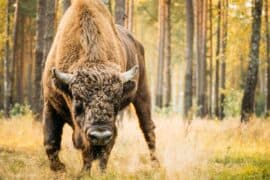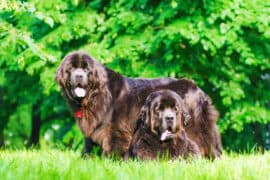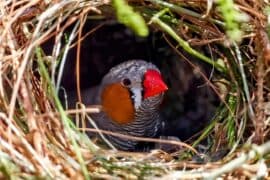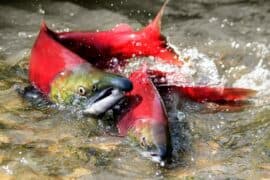Yellow Warbler
(Setophaga petechia)

Description
Setophaga petechia, also known as the Yellow Warbler, is a small passerine bird that belongs to the New World warbler family. These birds are widely distributed across the Americas and are known for their bright yellow plumage, sweet song, and energetic behavior. In this article, we will take a closer look at the Yellow Warbler, exploring their physical characteristics, habitat, behavior, diet, reproduction, and conservation status. Physical Characteristics Yellow Warblers are small songbirds, measuring about 4.3 to 5.1 inches in length and weighing approximately 0.3 to 0.4 ounces. They have a wingspan of about 6.7 to 7.5 inches. Male and female Yellow Warblers have similar plumage, with the males being slightly brighter in color than the females. The Yellow Warbler is primarily yellow, with olive-green wings and tail feathers. They have a thin, pointed bill and black eyes. The males have rusty-red streaks on their breast and flanks, which are absent in females and juveniles. The juveniles have a similar appearance to females but with a streaked appearance on their underparts. Habitat and Range Setophaga petechia is a widely distributed bird species found throughout the Americas. During the breeding season, they inhabit North America, ranging from Alaska and Canada to parts of the United States, including the Great Lakes region and the Northeast. During the winter months, they migrate to Central and South America. Yellow Warblers inhabit a variety of habitats, including forests, woodlands, and shrublands. They are also commonly found in riparian areas, parks, and gardens. They prefer areas with dense vegetation for nesting and foraging, such as willow thickets, alder stands, and shrubby habitats along streams, ponds, and wetlands. They are also adaptable and can be found in disturbed habitats, such as urban and suburban areas, as long as there is suitable vegetation for nesting and foraging. Behavior The Yellow Warbler, is an active and energetic bird species known for its sweet, melodious song. They are often seen flitting about in trees and bushes in search of insects and other prey. During the breeding season, male Yellow Warblers defend their territory by singing and engaging in aerial displays to attract mates. Females build the nests, which are typically small, cup-shaped structures made of grasses, plant fibers, and spider silk. The nests are usually located in shrubs or low trees, and the female lays 3-5 eggs per clutch. Both parents take turns incubating the eggs, and after hatching, they both feed and care for the young. Yellow Warblers are primarily insectivorous, feeding on a variety of insects and spiders. They are also known to consume small fruits and nectar. During the breeding season, they feed their young insects, which they catch in flight or by gleaning from foliage. Yellow Warblers are migratory birds, and during the winter months, they migrate to Central and South America. They are social birds and are often seen in mixed-species foraging flocks during migration. Overall, the behavior of the Yellow Warbler is characterized by their active and energetic nature, their sweet song, and their social behavior during migration. Diet Setophaga petechia is primarily an insectivorous bird species, feeding on a variety of insects and spiders. They have been observed feeding on caterpillars, beetles, flies, moths, and other insects. They catch their prey by gleaning from foliage or by catching insects in flight. Yellow Warblers are also known to consume small fruits and nectar, especially during the non-breeding season when insects may be less abundant. They may visit flowers to drink nectar or eat fruit that is available in their habitat. During the breeding season, Yellow Warblers feed their young insects, which they catch in flight or by gleaning from foliage. The young are fed a diet rich in protein to support their growth and development. Overall, the Yellow Warbler is an important insect predator, contributing to the balance of ecosystems by controlling insect populations. Their diet may also have an indirect impact on the pollination of plants if they visit flowers for nectar. Reproduction The Yellow Warbler, breeds once per year during the spring and early summer months. The breeding season varies depending on the location of their breeding grounds, with birds breeding earlier in the south than in the north. Male Yellow Warblers defend their territory by singing and engaging in aerial displays to attract a mate. Once a female has selected a mate, she will begin building the nest. The nest is usually a small, cup-shaped structure made of grasses, plant fibers, and spider silk, and it is typically located in shrubs or low trees. After the nest is completed, the female lays 3-5 eggs, which she incubates for about 11-12 days. Both parents take turns incubating the eggs and feeding the young after hatching. The young are altricial, which means they are born naked, blind, and helpless, and they rely completely on their parents for food and protection. The young Yellow Warblers grow rapidly and are able to leave the nest about 9-12 days after hatching. The parents continue to feed and care for them for several weeks after they have fledged, until the young are able to fend for themselves. Yellow Warblers may raise multiple broods during the breeding season, especially in areas with long breeding seasons or where nests are frequently destroyed by predators or severe weather. Conservation Status Yellow Warblers are considered to be of least concern by the International Union for Conservation of Nature (IUCN). However, like many bird species, they are facing threats from habitat loss and degradation. The conversion of natural habitats to agriculture and urbanization has resulted in the loss of breeding and foraging sites for Yellow Warblers. Pesticide use in agriculture and other human activities have also negatively impacted the availability of insect prey for these birds. Conservation efforts to protect the habitats of Yellow Warblers include the creation of protected areas, reforestation, and the use of sustainable agricultural practices that reduce the use of pesticides and preserve natural habitats. Citizen science initiatives, such as birdwatching and monitoring programs, can also contribute to the conservation of Yellow Warblers by providing valuable data on their populations and distribution.
Taxonomic tree:







